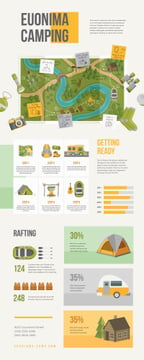An impact is costly and includes extra weight to your backpack. It also isn't particularly resilient.
How do you waterproof a bell tent?
Inevitably, whether or not a tent footprint is necessary depends on where and exactly how typically you're camping. Generally, it's a great idea to utilize one if you camp on rough surfaces or in damp problems.
Outdoors Tents with Reduced Deniers and Water-proof Rankings
Outdoors tents with reduced deniers and water resistant scores have a tendency to be lighter, however they can likewise be much more vulnerable. They may require more frequent fixings and have much less indoor area than tougher designs. If you're a casual backpacker who suches as to take a trip quick and light, this might be fine; however, even more seasoned walkers understand that compromising sturdiness can come with big consequences down the route.
The denier and water-proof ranking of a camping tent's canopy, rainfly, and floor can aid you establish its livability. Try to find higher-denier materials on the canopy and rainfly, as well as taped joints that aid stop water from leaking through stitches. Some manufacturers also make use of warm and sealant during construction to develop a stronger seam; these are called welded joints.
The livability of a camping tent can additionally be figured out by its floor measurements and capacity. An outdoor tents's flooring ought to be slightly smaller sized than the impact to avoid water from pooling under the sanctuary.
Camping Tents in Rough Terrain
Several backpacking outdoors tents include an impact created particularly for their model, which aids make sure a proper fit and protects the outdoor tents's base from wetness and sharp things. Various other producers sell global footprints that can be cut or folded up to match a tent's measurements.
The sort of terrain you'll encounter is an additional crucial consideration for picking gifts for hikers and campers a camping tent. For instance, if you'll be camping in a canyon or gully, seek a sanctuary that can deal with solid winds. These problems create disturbance that can make the difference in between appreciating your campsite or enduring discomfort.
The capacity and top height of an outdoor tents give you an excellent idea of its livability, yet extra factors to take into consideration include vestibules (the area of the rainfly covering the doors) and overall storage area. For example, during our winter months testing of the Marmot Tungsten, its charitable 93-by-82-inch floor conveniently dealt with 4 sweaty backpackers and their puffier shoulder period sleeping bags while still leaving enough room for equipment and people.
Outdoors Tents in Wet Issues
Even if your camping tent shows up dry, dampness hides in the spaces and crannies. Gradually, it can degrade the material. That's why it's so important to capitalize on rest days to deep-clean your outdoor tents and its components, such as zipper cellular linings, stake loopholes and adjustable webbing straps.
Additionally, ensure to pitch your outdoor tents in a flat location, not a divot or concave spot, to make sure that ground water doesn't gather in between the tent floor and impact or tarp. And if you're making use of a footprint, take into consideration a custom-cut one designed for your camping tent's floor plan. It won't accumulate rainwater the method a common ground cloth or tarp can.
Technique setting up and taking down your camping tent at home before you took off, to get a feel for exactly how quickly and effectively you can do it. Additionally, practice scouting your outdoor tents in different surfaces to see just how easy it is (or isn't) to do in bad weather.
Outdoors Tents in High-Rise Situations
Outdoors tents range in floor dimension and livability. As an example, a large camping tent with twin doors and vestibules like Marmot's Tungsten can handle four backpackers without calling for gymnastics to get in and out or to keep equipment.
The minimal trail weight spec is the most effective spec to compare designs, as it consists of the bare basics: tent body, rainfly and poles. However remember that the specification excludes camping tent risks, guy lines and stuff sacks.
Many backpacking outdoors tents can stand up to a light summer storm, however some can be swept away by gale-force gusts. Try to find a version with solid poles, a raised bathtub-style floor and joint taping to lower the opportunity of water seeping through. Pricier designs also have a tendency to include more powerful products that can resist the impact of debris and various other pressures.
Do glamping pods have electricity?
